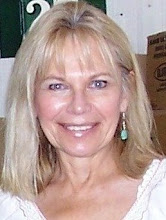Shown here is most of Hrodna (Grodno) province in Belarus, bordered on the west by Poland and on the north by Lithuania. (For an enlarged view, click inside the map.) Hrodna is a beautiful, historic old city with a population of about 325,000. About 65 miles (112 km) east of Hrodna (and about 60 miles south of Vilnius, Lithuania) is Lida, with a population of about 100,000. Midway between them is Scucyn (Szczuczyn), population 24,000. Both Lida and Scucyn have functioned as county or district seats at various points in time.
My maternal grandparents came from villages near Scucyn. The family of Aleksandr Prokopowicz lived in Kozarezy, about 7 miles east, and the family of Stefania Ruscik in Staro Gierniki, about 3 miles north of the city. I have traced their roots there back to the 1700s.
My paternal grandparents came from villages near Radun, a town of about 4,500 people, located about 18 miles northwest of Lida. Radun is only about 8 miles from the Lithuanian border and the small city of Eisiskes (Ejszyszki). The family of Julian Prokopowicz most recently resided in a series of small villages to the north and west of Radun; where they lived before the 1890s I do not yet know. The family of Anna Blaszko, however, has roots in Skladance back to at least 1810. That village is very close to Bastuny, east of Radun.
This map, Welcome to / Bienvenu en / Willkommen in Belarus (scale 1:800,000), was published by the Committee of Geodesy of the Council of Ministers of the Republic of Belarus in 1993. It is the first contemporary map of Belarus that I acquired, and I have stared at it so much, it’s amazing that I haven’t burned holes in the paper. Although it is not detailed enough to show my ancestral villages, this is my favorite map of today’s Belarus because, first and foremost, the city and town names are transliterated from Cyrillic Belarusian to Latin script, and the map legend is in English, French, and German, so I can read it. Dzieki boze! (Thank God!)
It shows important features like major and minor roads, railway lines, rivers, streams, lakes, forests (in green shading), and the “zone of radioactive contamination” from the 1986 Chernobyl nuclear disaster in Ukraine (horizontal orange stripes, very sobering to consider). The customs inspection points near Hrodna, Druskininkai, Salcininkai (Soleczniki), and Pahranieny are indicated by red circles crossed by red bars.
This map came folded in sections, and its creases are now so tattered I expect it to fall apart every time I pick it up. In retrospect, I wish I had made a full-size color copy while it was still in pristine condition. I acquired it 12 years ago through an online map store in Ontario, Canada. The store seems to have gone out of business, and I have never found another source for this map. Detailed English language maps of Belarus are rare. I also have a Ravenstein Verlag road map, Weiss-Russland / Belorussia / Bielorussie (1:750,000), which has locations labeled in both Latin and Cyrillic script and provides an extensive index.
Subscribe to:
Post Comments (Atom)










Again, I've enjoyed your latest post. I cannot get enough of learning about the history of our Polish ancestors. Although my ancestors have been in America for over 100 years, I still know that they lived in the lands of Poland much longer...Thanks for sharing the history of the area of Poland that your ancestors had came from!
ReplyDeleteBest Regards,
Al
Well, Basia, you'd better keep a tight grip on your map, because I've been looking for a map like this for many years!
ReplyDeleteSteve